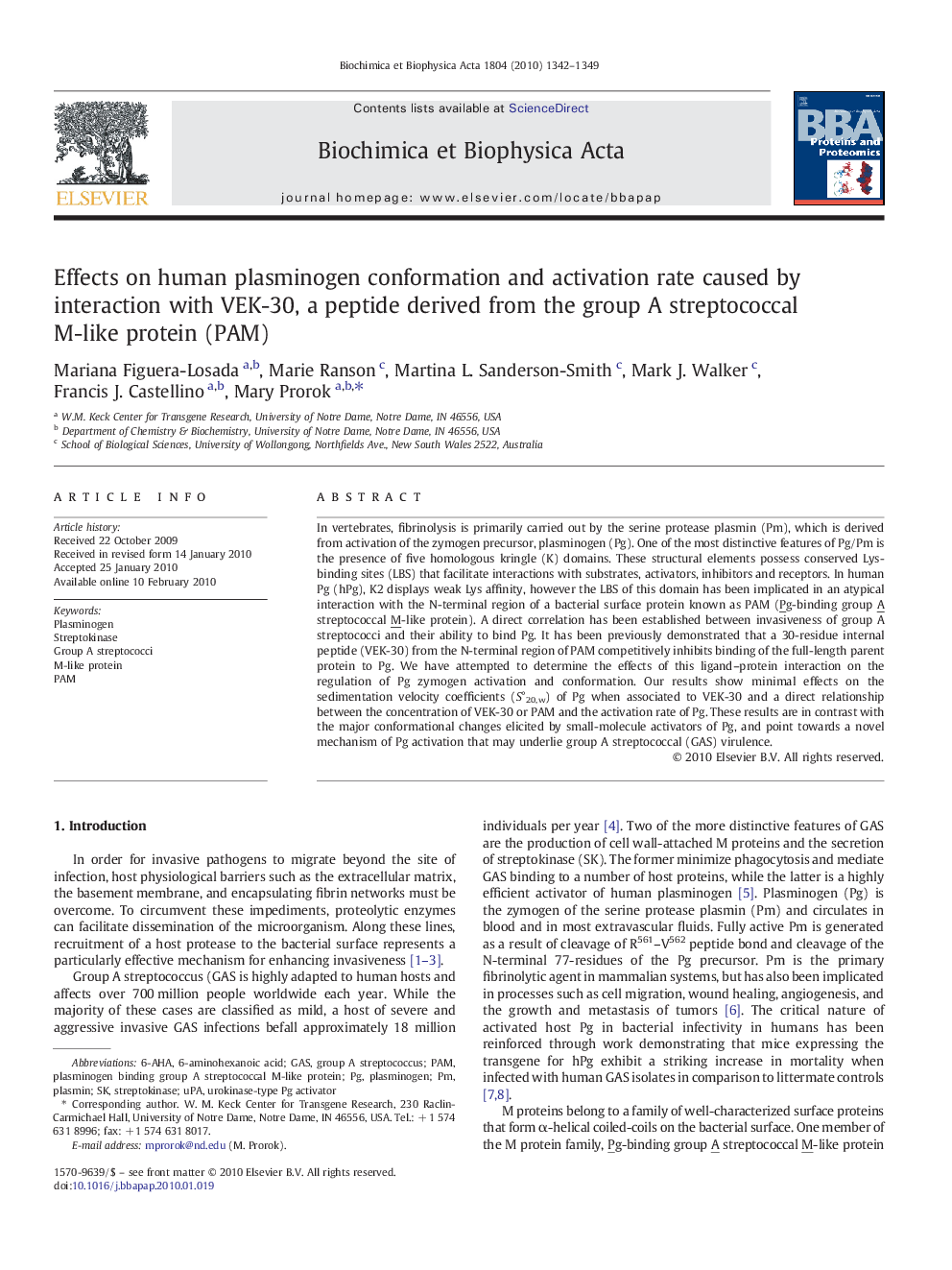| Article ID | Journal | Published Year | Pages | File Type |
|---|---|---|---|---|
| 1180047 | Biochimica et Biophysica Acta (BBA) - Proteins and Proteomics | 2010 | 8 Pages |
In vertebrates, fibrinolysis is primarily carried out by the serine protease plasmin (Pm), which is derived from activation of the zymogen precursor, plasminogen (Pg). One of the most distinctive features of Pg/Pm is the presence of five homologous kringle (K) domains. These structural elements possess conserved Lys-binding sites (LBS) that facilitate interactions with substrates, activators, inhibitors and receptors. In human Pg (hPg), K2 displays weak Lys affinity, however the LBS of this domain has been implicated in an atypical interaction with the N-terminal region of a bacterial surface protein known as PAM (Pg-binding group A streptococcal M-like protein). A direct correlation has been established between invasiveness of group A streptococci and their ability to bind Pg. It has been previously demonstrated that a 30-residue internal peptide (VEK-30) from the N-terminal region of PAM competitively inhibits binding of the full-length parent protein to Pg. We have attempted to determine the effects of this ligand–protein interaction on the regulation of Pg zymogen activation and conformation. Our results show minimal effects on the sedimentation velocity coefficients (S°20,w) of Pg when associated to VEK-30 and a direct relationship between the concentration of VEK-30 or PAM and the activation rate of Pg. These results are in contrast with the major conformational changes elicited by small-molecule activators of Pg, and point towards a novel mechanism of Pg activation that may underlie group A streptococcal (GAS) virulence.
